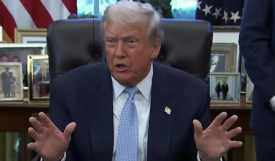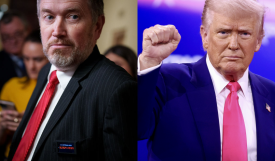BRICS New Development Bank Will Offer Alternative to IMF, World Bank
The announcement by the leaders of Brazil, Russian, India, China and South Africa to create the New Development Bank with $50 billion, plus a $100 billion currency reserve pool received reaction on Wednesday.
"It will help contain the volatility faced by diverse economies as a result of the tapering of the United States' policy of monetary expansion," said President Dilma Rousseff of Brazil at the time of the announcement.
The New Development will be located in Shanghai, China, the president will be from India, and the bank's leadership will rotate every five years among the five countries.
"The model is the Brazilian Development Bank (BDNES) which supports Brazilian companies investing across Latin America. In a few years, it will reach a financing capacity of up to $350 billion. With extra funding especially from Beijing and Moscow, the new institution could leave the World Bank in the dust. Compare access to real capital savings to U.S. government's printed green paper with no collateral," said Brazilian Journalist, Pepe Escobar in his column in Asia Times.
Latin Post asked William K. Black, Associate Professor of Economics and Law at University of Missouri–Kansas City, about the implications of this alternative to the World Bank and the International Monetary Fund.
"One, it will diminish the IMF's already drastically reduced power, and second, is it likely will lead to some greater spending on infrastructure, and that would be a good thing," said Black.
Black told Latin Post the IMF has drastically shrunk in recent years in large part because of the progressive, electoral revolt in Latin America against the Washington consensus of fiscal and trade liberalization, privatization and budget austerity.
During the 1980s and 1990s, Latin America was 80 percent of the total loan portfolio of the IMF; now it is under 1 percent. Without the European fiscal crisis, the IMF was going to have to cut staff. The Washington consensus also ensured that U.S. banks were paid enough to cover losses when loaning to Latin American countries.
Sameer Dossani from ActionAid International, a federation of more than 45 countries working to end global poverty, wrote in "BRICS Bank: New Bottle, How's the Wine," about the IMF and World Bank, "[T]hese institutions did not produce results in terms of poverty reduction or even in terms of economic growth.
"... As has been extensively documented, the period from 1980-2010 was in part defined by extremely slow growth globally. Where growth did occur in the North, it often turned out to be the result of speculative bubbles. In the South, the only countries to grow were those that ignored Washington consensus politics -- China, Malaysia, Singapore and a few others -- and used state-backed borrowing and investment to drive an industrial policy."
Latin Post asked William K. Black what were the implications of the currency reserve fund?
"It could be useful in particular to Russia because the Russian economy is in deep trouble because of Ukraine, and if the price of oil ever falls substantially it would be in terrible straits."
The New Development Bank funding aim will be infrastructure projects in developing nations, and begin lending in 2016.
Black said, "That's a good thing as every nation desperately needs funds for infrastructure development like water works and sewage plants. Recent news articles say children in India are well-fed but malnourished because they are constantly fighting parasites -- one billion people constantly fighting the effects of parasites and all because there are no water or sewage plants -- that's hard on a person."
Subscribe to Latin Post!
Sign up for our free newsletter for the Latest coverage!
© 2025 Latin Post. All rights reserved. Do not reproduce without permission.














